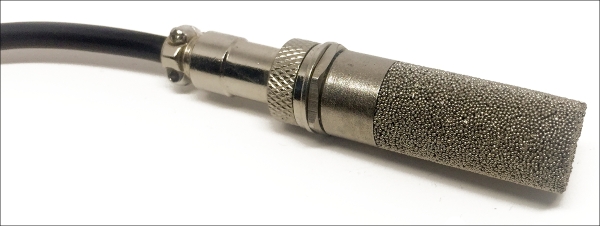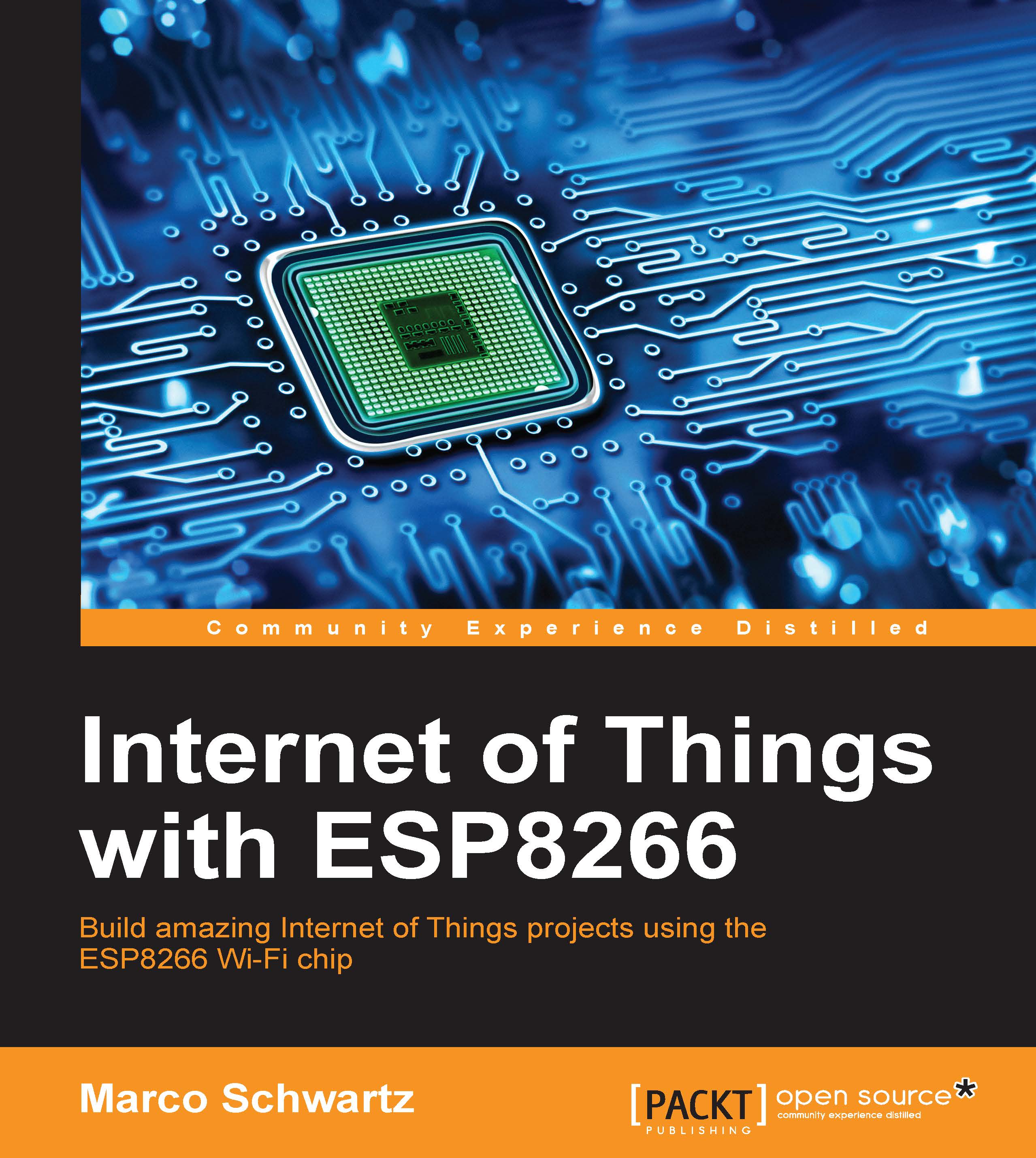Hardware and software requirements
Apart from the ESP8266WiFi chip, the core requirement of this chapter is the temperature and humidity sensor. As we will actually stick this sensor into the ground, we can't use the usual sensors we used earlier in this book.
Therefore, we need to use a sensor that is appropriate to be inserted into the soil. This is the case for the sensor I will use for this project, sold by Adafruit and based on the SHT10 sensor from Sensirion:

To use the sensor with the ESP8266WiFi chip, you will also need a 10K Ohm resistor.
You will also need a way to water the plant or your garden if necessary. For this, I simply used the 5V relay that we already used earlier in this chapter. This way, you can simply control most of the water pumps you can find on the market.
As usual, you'll also need a breadboard and jumper wires.
This is a list of all the components that will be used in this chapter:
AdafruitES8266 module (https://www.adafruit.com/products/2471)
FTDI USB module (https...
























































